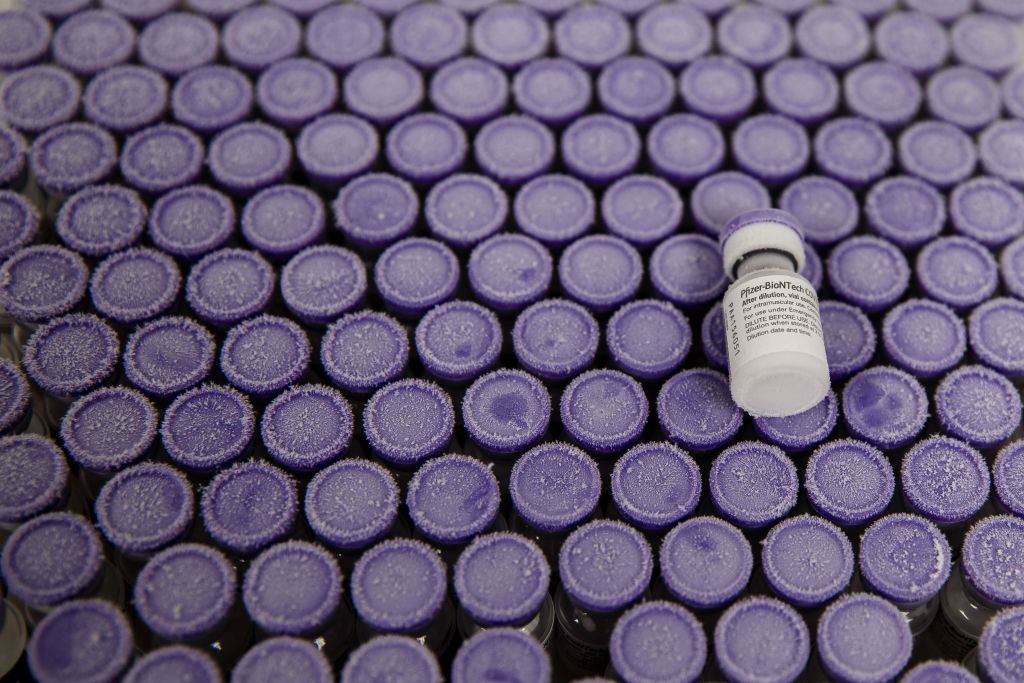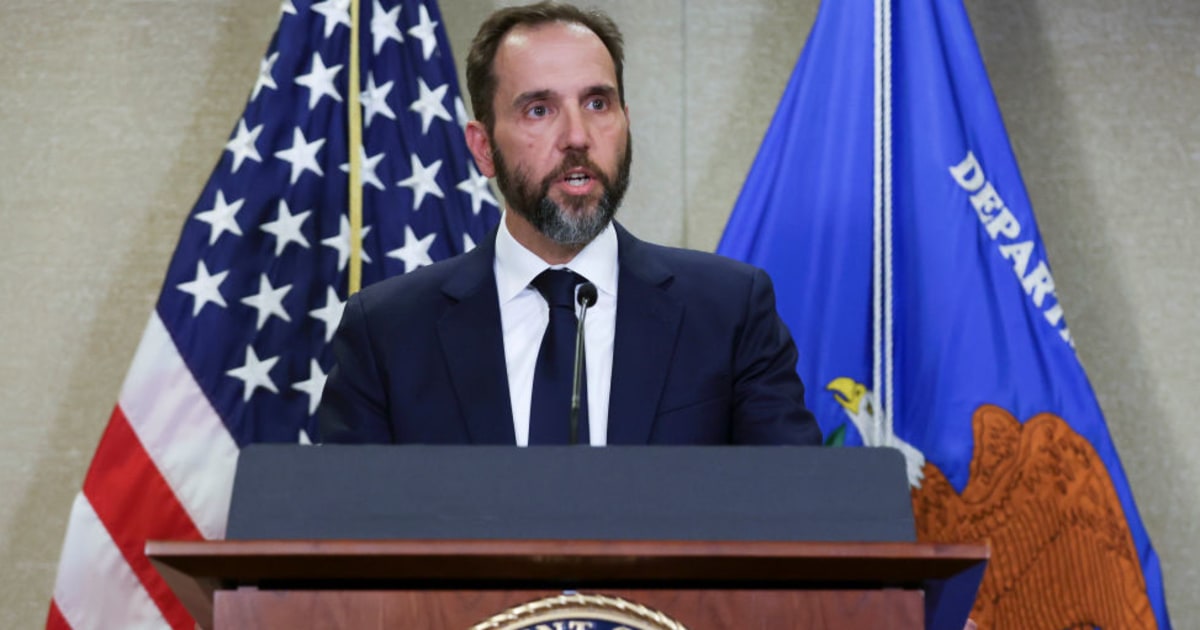Fauci explains when we will achieve herd immunity 4:29
(CNN) ––
A year after living under the weight of the covid-19 pandemic, it seems that trends have finally shifted in a positive direction.
New cases, hospitalizations and deaths are falling rapidly, while the supply of available vaccines increases.
The United States could be well on its way to herd immunity.
That is, the point at which enough people are protected against a disease and it cannot spread among the population.
Why wearing masks or face masks could give us immunity to the coronavirus?
This is what scientists in the United States explain
But it can take months to get to that level.
And no one expects it to look like an overnight return to our pre-pandemic lives.
More than 66 million injections have been administered, according to the latest federal data - nearly 8% of the US population is fully vaccinated.
Manufacturers' promises indicate that the United States should have enough vaccine supplies to cover everyone in June.
It is also possible that more than a quarter of the population already has natural immunity from a previous infection.
And that number may be much higher than official counts show.
However, some newer variants threaten progress and potentially reduce the protection offered by vaccines.
Which bypasses a certain degree of natural immunity.
Doubts about vaccines can also create some limitations.
advertising
To understand how these factors may influence the future timeline of the pandemic, CNN spoke with five experts: Dr. Arturo Casadevall, president of molecular microbiology and immunology at Johns Hopkins University;
Justin Lessler, associate professor of epidemiology at Johns Hopkins University;
Jessica Malaty Rivera, Scientific Communications Leader at the Covid Tracking Project;
Dr. Aneesh Mehta, Emory Vaccine Center, and Dr. Christopher Murray, Director of the Institute for Health Metrics and Evaluation.
Israel sets the example of how to mass vaccinate 2:33
Their responses have been edited below for length and clarity.
There is still a lot to understand about covid-19.
But if you had to put a figure on it, what level of population protection is required to achieve herd immunity against covid-19?
Casadevall:
I am in the range of 65% to 80%.
We all hope that this virus is no different from others, and that we reach a point where enough people are immune that the virus cannot jump any further.
It reaches a point where there are so few carriers, so few people it can jump to, that the epidemic subsides.
The number of cases is the threat.
And on the downward curve, we see that the number of people you can jump to is decreasing.
Lessler:
Herd immunity is a continuum.
As immunity increases, the disease becomes easier to control.
At this time, existing control measures - such as mask use and capacity limitation - offer some protection.
Which contributes to the decrease in cases.
However, to get to the magic number where you can stop most of those measures and not worry about big outbreaks –– there will still be some–– it is between two-thirds and 80%.
But, the added herd immunity provides real benefits even when you're right at that threshold.
WHO warns that herd immunity will not occur in 2021, even with vaccines
Malaty Rivera:
We really need to vaccinate at least 70% of the population.
That seems potentially possible by the end of the year if there are no major bottlenecks in production or delivery.
Mehta:
I've seen estimates as low as 65% and as high as 95%.
What I would really like is to make sure we get to at least 75%.
Murray:
Respiratory viruses are very seasonal.
So the level of immunity required in summer is much lower than in winter.
Covid-19 is drastically less seasonal than other respiratory viruses, but as we have learned it still is.
I would give a herd immunity threshold of 65% in summer and 85% for winter.
People who have already caught COVID-19 may have some natural immunity after infection.
Can we count on those people in herd immunity?
Casadevall:
Yes. The number of people known to have suffered a reinfection is very low.
There have definitely been a few cases and they were documented.
But even though all this virus is still floating around, people are not getting sick again.
And for me that is really encouraging.
Lessler:
In the short term, over the next six months, I would consider everyone who has been infected and most people vaccinated immune.
There are some cases of reinfection, but they occur mainly among people who had a fairly mild illness in the first infection.
Doctor Huerta exhibits some discomfort after the second dose of Moderna's vaccine 15:00
Malaty Rivera:
No. Herd immunity can only be discussed in the context of mass vaccination.
I am on the more conservative side.
And I'm very hesitant to say that natural immunity is making a significant difference in these numbers.
Mehta:
Maybe.
The United States has had many, many infections, but they have spread over time.
It is difficult to know exactly how many people were infected.
Also, it seems that some people lose their immunity some time after infection.
The objective should be to protect the population through vaccination.
Murray:
Normally I would say yes, but some tests of the variant first discovered in South Africa put that into question.
Furthermore, everything we know about natural immunity decline is purely speculative.
The new variants potentially threaten levels of protection, both in terms of vaccine efficacy and possible reinfection.
How much does this threat affect progress measures towards herd immunity?
Casadevall: Variations
are the great threat on the horizon.
They have the potential to derail things, but I emphasize that it is potential.
We know that there are variants, but there are still very few cases of reinfection documented.
What that suggests to me is that the variants do not bypass the immune defense.
The most encouraging thing for me is how fast that curve goes down.
It gives me hope that we will break the curve before the variants become a threat.
Lessler:
There are some variants that seem to escape that immunity and change the equation.
In a fully susceptible population, the average person with the parent strain passes the virus to three others, so it takes two people to be immune to begin to slow the spread.
But with some variants, the average person can transmit the disease to about five people.
So you need four to be immune to stop the spread.
Herd immunity: the curious case in Manaus, Brazil and the lesson it leaves us
Malaty Rivera:
The conversation about variants really should revolve around infection prevention.
If we keep the transmission low, we can keep the variants low.
While vaccinations are being administered, one of the many reasons we still wear masks and practice mitigation strategies is to buy time.
Mehta:
We think the vaccines will provide good immunity against most variants.
But there are some, especially the variant first identified in South Africa, that seem to have the ability to bypass (immunity) and can alter our level of protection.
That is why it is so important to get vaccinated as quickly as possible.
The faster we reach high levels of protection in our community, then the chances of new variants spreading and developing will decrease.
Murray:
There is not a very clear route to herd immunity if those variants spread.
And it is a very complex matter to try to predict at what rate they will spread.
But cases are declining rapidly, perhaps even more than we expected.
Some surveys still show a significant amount of distrust of vaccines.
How will this affect the path to herd immunity?
Casadevall:
The number of cases is the threat.
And much depends on the adoption of the vaccine for next year.
The more cases you have, the more the virus replicates and the more likely a person can become infected.
If we continue as we go and flatten the curve, the probability of a bad scenario is reduced.
Malaty Rivera: Anti-vaccine
people are a noisy minority.
They do not represent a large group of people in this country.
And I don't think they have a huge win when it comes to things like herd immunity.
Typically the impediment to people not getting vaccinated is understanding, but we've had great success with campaigns to address this.
When is immunity achieved after the covid-19 vaccine?
1:06
Mehta:
It is really understandable why some people in our communities may have doubts about the vaccine.
What we need to do is continue the good work of caring for them and being role models.
Not only by sharing knowledge and vaccinating ourselves, but by continuing to take precautionary measures such as wearing masks and practicing good hand hygiene.
Murray:
If we can go from 25% of the population that is not vaccinated to 10%, that really increases herd immunity.
Even if the variants aren't as bad as we fear, it will still be pretty close.
And vaccinating over in the middle of the tipping point would make a big difference.
What is the conclusion?
Generally speaking, when can we expect a return to normalcy?
Casadevall:
No one in this world can tell you what percentage of protection is needed or when it will pass.
My instincts are positive and I think 2021 will be a better year than 2020. Assuming we don't have a variant that causes new lockdowns, I think the second half of this year will be different.
We may lift restrictions in the fall, or perhaps a little earlier if the rapid decline continues and the curve remains down.
Lessler:
When we get to a very, very low number of new cases, it will be a sign that things may be fine.
As we backtrack on control measures, we must do so slowly and deliberately.
Also be on the lookout for any resurgence.
Some of this comes down to deciding what is normal.
Because we must accept the fact that we will be living with this virus forever.
It will come back again and again like the flu, but that doesn't mean it will always be the scourge that it is now.
How long does immunity from coronavirus vaccines last?
Malaty Rivera:
Vaccinating 70% of the population is going to be an absolute change for us in terms of going back to what we could do in a similar way before covid-19.
I am optimistic that this fall will be very different.
And I hope that means things like traveling and socializing without masks with loved ones.
We are on track to achieve this if we keep trends low.
Mehta:
Thanksgiving is my favorite holiday, when everyone in the family gathers at my mother's house.
My hope, both personally and professionally, is that that happens before Thanksgiving.
Murray:
I really think it will be a quiet summer.
But whether he will return is an open question, to which we will not know the answer until perhaps December.
Two powerful forces, seasonality and the scale of vaccination, combined are going to make things go down pretty steadily.
But, we will have to wait to see it.
Covid-19 Herd immunity Pandemic Coronavirus vaccine















